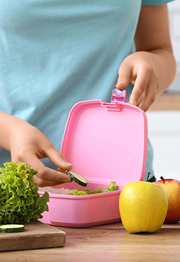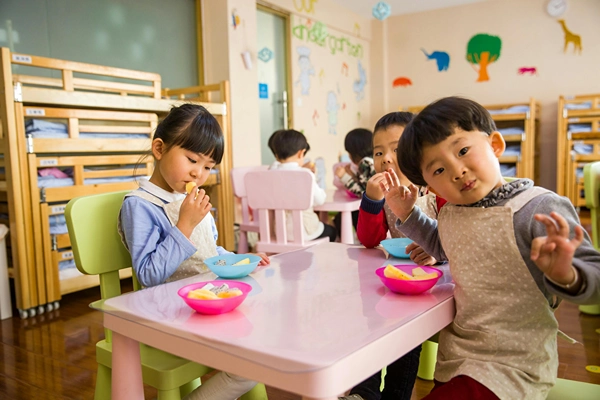Financial Freedom for Future Doctors: A Step-by-Step guide to Managing Medical School Loans
Managing loans while in medical school is no easy feat. Yet, securing a stable financial future requires making smart choices early on. This guide offers straightforward strategies that can help medical students tackle their debt with confidence.
By following these steps, future doctors can focus on their studies without being overwhelmed by financial concerns—and set themselves up for a solid financial foundation post-graduation.
1. Plan Your Budget: Know Your Finances
Budgeting may not sound exciting, but it’s the backbone of responsible financial management. Start by tracking all your monthly expenses, from tuition and rent to everyday needs like groceries and transport. Having a clear picture of where your money goes helps prevent overspending and can identify areas where you could cut back.
Medical school can be demanding, leaving little time for traditional budgeting methods. Using an app designed for busy students can make tracking spending easier and more convenient. This also allows you to establish savings habits, even if they’re small. Every dollar saved is one less dollar borrowed or one more dollar ready to pay down loans faster.
2. Understand Your Loan Options, Repayment Plans, and the Potential of Refinancing
Medical school loans come in various forms, from federal to private loans, each with distinct terms. Knowing the type of loan you have is essential because it determines the repayment options available. For instance, federal loans offer flexible repayment plans, including income-driven repayment and Public Service Loan Forgiveness (PSLF) for those working in qualifying nonprofit or government roles after graduation.
Reviewing these repayment plans while still in school can help you map out future payments and understand how each option affects your long-term financial outlook. Income-driven repayment plans, for example, adjust monthly payments based on income, which can be particularly useful during the lower-earning residency years. While this reduces your monthly payment, it may extend the repayment period, potentially increasing the total interest paid.
Refinancing medical school loans is another option worth considering, especially as you transition from residency to a more stable income. Refinancing involves taking out a new loan with a private lender to pay off your existing loans, ideally at a lower interest rate. This strategy can help reduce your monthly payments and the overall amount of interest paid over the life of the loan. However, it’s essential to weigh the pros and cons.
While refinancing may lower interest rates, it’s important to note that refinancing federal loans with a private lender means giving up benefits like income-driven repayment plans, deferment, and forbearance options, as well as eligibility for federal loan forgiveness programs. Therefore, refinancing may be more beneficial for those with high-interest private loans or those who don’t plan to take advantage of federal loan benefits. By assessing your financial goals and career path, refinancing could provide a faster, more cost-effective route to repaying medical school debt.
For more information on federal student loans and repayment options, check out the Federal Student Aid website.
3. Consider Loan Forgiveness and Repayment Assistance Programs
Several loan forgiveness programs can provide substantial relief from medical school debt. Programs like the PSLF can forgive loans after ten years of qualifying payments for those in eligible roles. Additionally, some states and hospitals offer loan repayment assistance for physicians working in high-need or underserved areas.
Medical students interested in these programs should research eligibility criteria early to ensure they qualify. These programs typically require consistent documentation and a long-term commitment to certain types of employment, but the financial benefits can be significant. For instance, some repayment assistance programs can cover a considerable portion of your debt in exchange for a few years of service in specific locations or specialties. Understanding these options and including them in your financial plan can lighten your debt load considerably.
4. Minimize Debt Accumulation During Medical School
While loans may be inevitable for most medical students, it’s worth exploring ways to reduce how much you borrow. Scholarships and grants are available from various organizations, including medical societies and schools themselves, and do not require repayment. Applying for these each year can reduce your overall loan balance.
Consider working part-time in a medical or research role that complements your studies, even if it’s just a few hours a week. It won’t cover all expenses, but it can offset costs like books or supplies. Some medical schools offer work-study programs specifically for students in healthcare, providing relevant experience alongside a modest income. Additionally, living with roommates, finding affordable housing, and cooking at home rather than dining out can make a noticeable difference over time.
5. Create a Post-Graduation Financial Strategy
After graduation, transitioning into a well-thought-out financial plan is crucial. With residency salaries typically much lower than an attending physician’s salary, new graduates must be cautious with their finances. Start by setting up an emergency fund, aiming to cover three to six months of essential expenses. This fund provides a safety net and can prevent reliance on credit cards or additional loans in times of unexpected need.
While it might be tempting to make only minimum loan payments initially, paying extra whenever possible can save you money on interest and shorten your repayment period. As your income increases, plan to increase your loan payments. Use bonuses, tax refunds, and other windfalls to make larger-than-usual payments toward your debt, accelerating your path to being debt-free.
6. Maximize Income Potential Through Smart Debt Management
Smart debt management doesn’t just mean paying off loans—it involves leveraging debt wisely to build future wealth. As you approach the later stages of your residency and early career, take time to develop a balanced financial plan that incorporates retirement savings, loan repayment, and investments.
For example, setting aside funds in a retirement account, such as a Roth IRA, can build wealth over time while providing tax advantages. Even a modest amount saved during residency can grow significantly over the course of your career. Meanwhile, you can look into consolidating high-interest loans, which could reduce your monthly payments and free up funds for other financial goals.
Ultimately, managing medical school debt is about building financial habits that will benefit you for a lifetime. Remember, each dollar you put toward debt now strengthens your financial stability in the future. By budgeting, choosing the best repayment plans, exploring loan forgiveness options, and planning strategically, you’ll set yourself up for a financially sound career in medicine.








